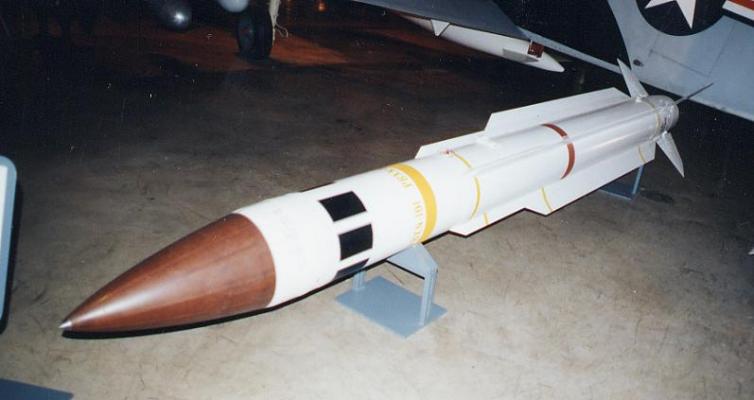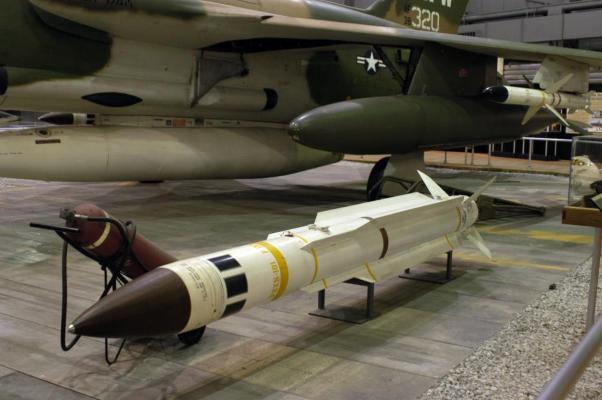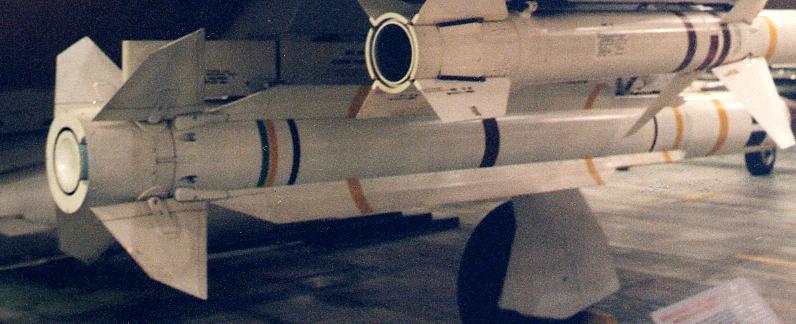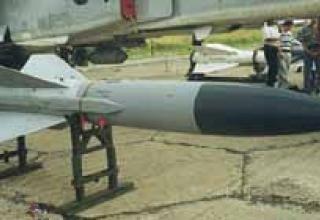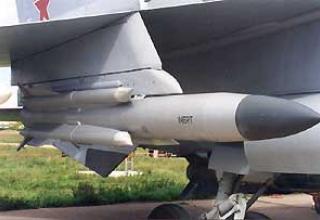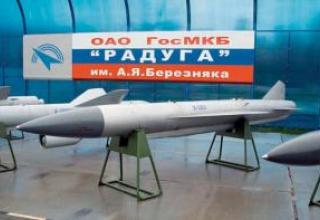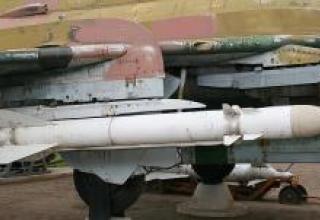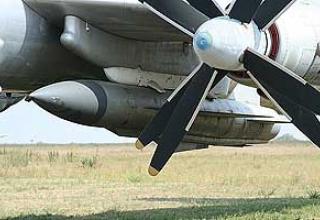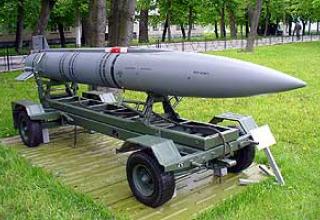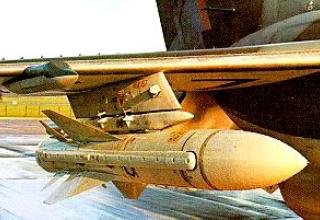Standard-ARM" (AGM-78) anti-radar missile is designed to destroy radio equipment, and primarily radar stations of air defense systems and anti-aircraft artillery. Its development. In 1966, the General Dynamics company began to replace the Shrike anti-radar missile, the essential drawbacks of which were the use of a pre-configured CNS and the impossibility of homing on the radar, which stopped working.
In 1968, the "Standard-ARM" was adopted by the U.S. Air Force and Navy and used on F-105F, A-6A and F-4E aircraft). In addition, it is equipped with the armed forces of Israel and the Republic of Korea.
Composition:
The "Standard-ARM" rocket is based on the "Standard-1" RIM-66A and has the same aerodynamic and structural schemes. The rocket is equipped with a dual-mode solid propellant engine Mk.27 mod.4 weighing 360 kg. The combustion mixture is made of polybutadiene and polyurethane, the oxidizer is ammonium perchlorate.
It uses passive radar method. In this connection, several variants of passive wide-band radar homing head with different operating frequency ranges have been created. The missile's GSN has equipment that allows it to memorize target coordinates, so that its homing can continue even after the radar's radiation is turned off. Specially designed radio transparent fairings (CW-1106/D) provide transmission of signals from virtually all radar stations within the operating range of the SOS. They are made of a material with a crystalline structure. The use of fairings with different bandwidths allows a certain selection of radar signals.
The missile is equipped with a powerful shrapnel-flag warhead (weighing about 150 kg), which is detonated at the height of 15 - 20 m above the target. In this case, the radius of flight of its fragments (cubic shape with an edge length of 10 mm) is about 600 m. This BC ensures the defeat of the equipment at a distance of up to 150 m, and the live force - up to 500 m. In a ground explosion, a funnel with a diameter of about 5 m is formed. In the intermediate section of the missile, located next to the BC, a signal charge is set, after the explosion of which a smoke cloud is formed, which is a reference point for the bombing of other aircraft.
The following modifications of the Standard-ARM rocket have been made : AGM-78A (mod 1-3), AGM-78B (mod 1-3), AGM-78C (mod 1-3) and AGM-78D (mod 1 and 2).
They have some design features and different operating frequency ranges of the CNS. For example, the missile AGM-78B mod.1 has a fairing CW-1071 (made of plastic material), which transmits radar signals of a fairly wide spectrum, and AGM-78B mod.2 uses a fairing CW-1070D (made of ceramic material), providing defeat only special radars.
Characteristics:
| Motor unit | single-step circuit, TTRD |
| Length, m | 4,41 |
| Diameter, m | 34,3 |
| Weight, kg | 630 |
| Wingspan, m | 1,08 |
| Start range, km | 75 |
| Maximum speed, m/s | 820 |
| Guidance System | Passive radar homing |
| Fighting unit | Shrapnel-and-foot |
| Weight BC, kg | 150 |
| Placement in service | 1968 |
Testing:
Standard-ARM" antiradar missiles (SLBMs) were used in the Vietnam War as well as in Israeli military operations against Arab countries.
In 1976, the production of Standard-ARM missiles was discontinued. In total, the U.S. Air Force and Navy were supplied about 3000 missiles. The cessation of production of missiles was due to the high cost of the missile - almost three times higher than the "Shrike" missile.
Other disadvantages of the missile include its relatively low flight speed, which allows the enemy to take countermeasures to disrupt the attack, as well as the lack of homing heads to cover a fairly wide range of frequencies.
Sources:
- Зенитные ракетные комплексы ПВО СВ. Техника и вооружения №5-6.99
